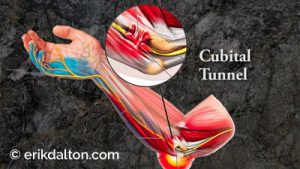The neuro-reflexogenic relationship of muscles, nerves and joints is at the heart of Myoskeletal Alignment Techniques (MAT)
Any alteration of joint function is carefully monitored by the brain and spinal cord and may influence muscular function. To understand the fine control of motion, the separate activity of individual muscles is not as important as their coordinated activity within the different movement patterns. This course presents concepts that appear as the best basis for rational treatment and good long-term therapeutic results in the general population.
The shoulder girdle functions to position the hand, provides stability for hand use, lifts, pushes, elevates the body, assists with forced inspiration and expiration, and even weight bearing as in crutch-walking. The hand performs a significant range of functions. It is an organ of touch, an extension to the brain that provides information to the visual system about the environment, and it is an important organ for expression and nonverbal communication. The hand can grasp with forces exceeding 100 pounds as well as hold and manipulate a delicate thread. Unfortunately, optimal hand functioning is often jeopardized by problems occurring in the shoulder girdle, elbow and wrist.
Tension, trauma, and repetitive movements combined with gravitational exposure alter the position and function of associated joints. Mobilizing joints through muscle manipulation is a key factor in the success of MAT. Therefore, soft tissue maneuvers have been developed to release osseous fixations, relieve protective spasm and improve nerve gliding through all the body’s synovial joints.
Active movement psychologically reinforces to a client that she can move the arm through a greater range of motion. This is called stretch tolerance. Physiologically, active movement assists the healing collagen tissue to align itself along normal stress lines and aids in restoration of normal strength. Active movement also nourishes articular cartilage and enhances its repair. Continual re-evaluation of motion progression is valuable to provide clients with short-and long-term goals. This also gives the clinician feedback about compliance with home exercise programs which includes TheraBand® strengthening tools and specific stretching modalities.
On sale this week only!
Save 25% off the Essential MAT Assessments course!
NEW! Now available in the enhanced video USB format!
In the “Essential MAT Assessments” course, you’ll learn how to perform 130 essential orthopedic and osteopathic tests, as well as anatomic landmark exams to get to the bottom of your client’s pain complaint. Save 25% this week only! Offer expires Monday October 28th. Click the button below for more information and to purchase the course. Upon completion, you will receive 16CE hours and a certificate of completion to display in your office. BONUS: Order the home study version and get access to the eCourse for free!







